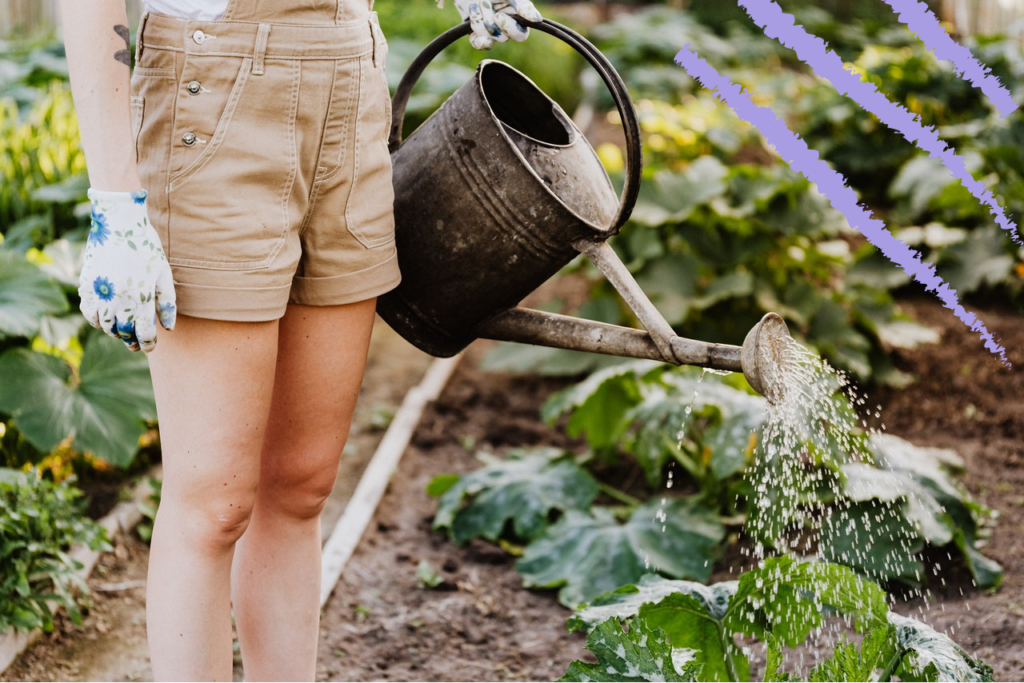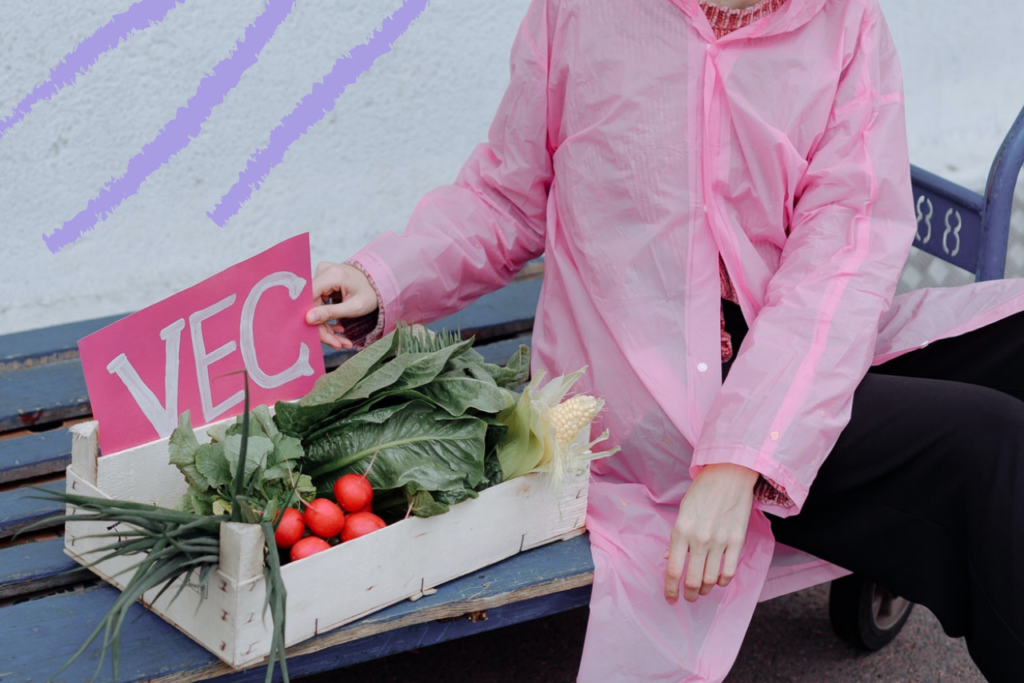Has there ever been a more vital time to consider growing your own fruit and veg at home? With a much larger focus on sustainability and eco-friendly lifestyles, as well as some considering the increased risk of disasters and doomsday prepping, finding ways to become more self-sufficient is an admirable goal.
Not that South Kesteven District Council agree; earlier this month it was reported that the district council had fined a couple £470 for not seeking planning permission for the raised beds they had recently installed in their garden. Talk about discouraging greener behaviour!
Indeed, it is understandable if you feel overwhelmed by the concept of starting your own at-home growing area. After all, growing food is an ancient discipline that’s been perfected over thousands of years, and you’re not going to be immediately successful, however hard you try.
Don’t let that put you off, though. Starting your little home-based allotment may be challenging, sure, but with a little bit of research and dedication, it can also be fun and hugely rewarding once you start getting your first harvests. If you’re planning on growing your own fruit and vegetables, here are a few pointers on getting started.
SUNLIGHT RULES
While most plants will be able to thrive in different levels of shade, you’re going to want to find a nice sunny spot for your back garden veggie plot. Plants need sunlight to thrive, and finding an area that gets as much sunshine as possible will be the best choice here.
Of course, some vegetables do grow perfectly well in partial shade, but if your full sunlight space is limited, give priority to the vegetables that need it the most. If your garden is plagued by a fair covering of shade, you can still get by growing root vegetables and hardy perennial herbs like rosemary and thyme just fine, for example.
If your garden gets between four to six hours of sunlight, this is ample time to allow beans, beetroot, carrots and onions, as well as leafy crops like lettuce and kale, among many others, to thrive.

PLAN YOUR LAYOUT AND ROTATION
We recommend laying out a blueprint of your planned crop layout so that you can be sure you’ve chosen the right areas for all of your fruits and vegetables, allowing you to rotate as necessary.
Rotating the position of your crops reduces the loss of nutrients in the soil as different plants will absorb different minerals. It also helps to reduce the appearance of crop-specific pests as they will have fewer opportunities to latch on to a host.
Alongside this, it will also help you to keep the number of weeds down, too. Certain fruit and vegetable plants act as a natural deterrent to weeds, such as those that block out the sun, helping to overshadow weeds.
Though it’s a complex subject matter and hinges on your chosen produce, generally speaking, each year sees separate beds dedicated to three or four subgroups of vegetables. Here’s a fairly standard breakdown of four plots, divided according to preferred soil conditions:
- Potatoes, tomatoes and peppers
- Beans and peas
- Brassicas (cabbage and cauliflower, for example) and leaves
- Root vegetables and onions
Each year the beds change accordingly, to ensure the diversity of soil, though some crops, like rhubarb and asparagus, are perennial, and grow all year round. Because each crop requires a different pH level of soil (more of that later) rotation is a wise move.
CHOOSE A VARIETY THAT SUITS YOUR SKILLSET
When it comes to deciding on your fruit and vegetable selection, obviously it’s important to choose those crops which you enjoy and will be useful to you. However, try to make sure you pick a variety of crops that grow and fruit at different times of the year, providing you with more regular harvests.
Otherwise, if all your plants are harvested at the same time each year, you’ll be inundated with fruit and vegetables, increasing the chances of waste or the need to give them all away. As well as this, knowing that you’re going to be getting new fruits and vegetables every few weeks will keep you interested in this new hobby.
Read: 10 IDEAL hacks to turn your food waste into something delicious
In terms of the vegetables which are easiest to grow here in the UK, let’s break it down a little for you:
- Lettuce is a great beginner’s crop as it can be sown into the ground for most of the year and produces a crop within a few weeks of planting.
- Swiss chard is a continuous crop, meaning you can simply pick the leaves and allow the plant to stay in the ground, producing further leaves over time.
- Kale is hardy, and if sown in late summer, it will likely survive all through winter, providing you with delicious nutrition even during the coldest months.
- Runner beans are easy to grow from seed and can crop for months should you pick them regularly.
- Courgettes grow abundantly without much intervention. You should plant in late May for results later in the summer. Do remember to keep picking them, otherwise they’ll grow into marrows, which do tend to be a more bitter affair.

PROTECT YOUR CROPS
Before you start to plant your seeds, it’s important to prepare your garden to cope with pests that would prefer to use your seeds and seedlings as a tasty snack instead. If you’re living out in the countryside, you can expect everything from rabbits and mice to deer and certain birds to take a bite out of your plants and ruin all of your hard work. Birds will happily eat your seeds, too.
To prevent these critters from getting to your crops, while allowing them to get sunlight and rain still, you could use a fruit cage or other form of crop protection. As William James & Co, purveyors of fruit cages, recommend, such structures form large, protective barriers made of polythene netting suspended by an aluminium or steel frame. They are tall enough for you to walk inside and maintain your crops without hindrance.
SOIL SMARTS
As you do your research, you’ll quickly learn about all of the different soil types that certain fruits and vegetables prefer. Potatoes and other root vegetables tend to do perfectly fine in the dense, clay soil, which is so abundant across the UK, but they would prefer sandy soil if possible.
However, more delicate plants such as berries will prefer a siltier soil, which will be able to hold onto water a lot better than some other types of soil. It’s worth planting your strawberries in their own specific pots if you’re able to. Strawberry pots help you to protect them from weed growth better as well as provide better drainage than standard pots.
It’s a wise idea to test your soil prior to planting. Most garden centres sell pH testing kits cheaply – above 7.0 pH and your soil is alkaline, below and it’s acid. Generally speaking, 6.5 is the ideal pH for all-purpose growing.
When the pH is very acidic (below 5.0 ish), most nutrients in the soil become unavailable to crops. Many keen urban gardeners remedy acidic soil by adding lime to it. On the flip side, a soil which is too alkaline causes certain nutrition deficiency in crops, too. Adding an acidifying element, like sulphur or iron sulphate, can remedy this.
START PLANTING
It’s important to avoid planting your crops with little consideration. You might think that simply putting seeds and bulbs in the ground will suffice; however, certain seeds need different levels of care and conditions when they’re sown. Of course, hardier bulbs and seeds can get by with being dropped into the ground and forgotten about, but there are a number of seeds that will need to be started off in seed trays away from the harsh elements. Understanding how to sow your seeds is crucial to growing a healthy crop, so make sure you don’t get ahead of yourself here.
WATER AND FEED YOUR PLANTS
Regular watering is important for your fruits and vegetables, especially in hotter, drier climates. Keep an eye on what your plants are trying to tell you. There are some tell-tale signs that your plants need more water, such as the wilting and yellowing of their leaves. On the flipside, if you’ve overwatered your plants, you’ll know it by the sight of their brown, limp looking leaves. Your plant may well also be dropping both new and old leaves, and have soft, squishy stems, two telltale signs of overwatering.
While your different plants will cope with varying levels of watering and nutrients, they tend to cope with a generous watering session.
Remember, if your plants are in pots and raised beds, it may be worth being more conscious of which plants need what amount of water to avoid over or under-watering them.
When plants are grown in the ground, they’ll benefit from the much better drainage of the earth and will also be able to draw more nutrients from the ground too. It’s worth adding some plant food to your watering schedule, however, to replenish nutrients where possible to ensure better quality growth.
If you’re keen to dig a little deeper (in more ways than one!), then check out these 6 common issues that might befall you if you’re growing your fruit and veg in a greenhouse.





